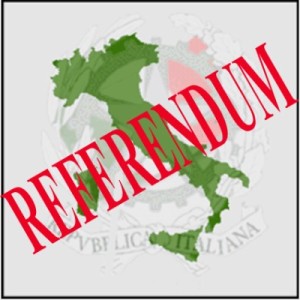my article on Fruits&Votes blog
The electoral results of the constitutional referendum have led to the Prime Minister’s resignation. But let us consider what happened before.
 On December 4th 2016, Italian voters expressed their vote on a referendum about constitutional reforms. This was the third referendum of its kind in Italy, with the other two held in 2001 and 2006. The two options presented to voters this time were related to the approval or rejection of the reform promoted by Matteo Renzi’s government and his centre-left parliamentary majority. However, several Democratic Party’s MPs decided not to support Renzi’s position, and used the ballot as a tool to oppose their leader due to different visions of the party, the government, policies, and the reform itself. The reform was approved earlier by an absolute majority in both houses of parliament, but the proposed changes required a two-thirds majority in parliament in order to be implemented without a referendum according to the Italian Constitution (art. 138.3). Since this threshold was not met in parliament, the referendum was called (by the Government) by collecting the required number of voter signatures, as stated by the art. 138.2, while the opponents to the reform were not able in getting the minimum number of required signatures (500.000).
On December 4th 2016, Italian voters expressed their vote on a referendum about constitutional reforms. This was the third referendum of its kind in Italy, with the other two held in 2001 and 2006. The two options presented to voters this time were related to the approval or rejection of the reform promoted by Matteo Renzi’s government and his centre-left parliamentary majority. However, several Democratic Party’s MPs decided not to support Renzi’s position, and used the ballot as a tool to oppose their leader due to different visions of the party, the government, policies, and the reform itself. The reform was approved earlier by an absolute majority in both houses of parliament, but the proposed changes required a two-thirds majority in parliament in order to be implemented without a referendum according to the Italian Constitution (art. 138.3). Since this threshold was not met in parliament, the referendum was called (by the Government) by collecting the required number of voter signatures, as stated by the art. 138.2, while the opponents to the reform were not able in getting the minimum number of required signatures (500.000).
The result of the referendum was both clear and decisive. Approximately 60% of voters cast a “NO” vote in opposition to the proposed reforms and only 40% voted in favor. Perhaps the most striking result was voter turnout. Nearly 70% of eligible voters cast a vote, a percentage that is similar to that reached in general elections in Italy (e.g., 75% in 2013). This figure also confirms that Italy remains a democracy with one of the highest electoral participation rates in the world. Despite this high turnout figure, one of the most notable features of the referendum is the persistent North-South divide in terms of turnout and the level of rejection of the reform. Rejection of the referendum was particularly high in southern regions, with peaks in Sicily, Sardinia, and Campania. Support for the referendum was limited and prevailed in only two regions (i.e., Tuscany and Emilia-Romagna), as well as in the province of Bolzano. Leggi tutto “The Italian Constitutional Referendum”
 For many years after World War Two, the mass party model dominated Italian politics. High rates of membership and activism were considered to be essential for optimising electoral performance, for optimising organisational resources, and for the legitimacy of the party itself.
For many years after World War Two, the mass party model dominated Italian politics. High rates of membership and activism were considered to be essential for optimising electoral performance, for optimising organisational resources, and for the legitimacy of the party itself.

